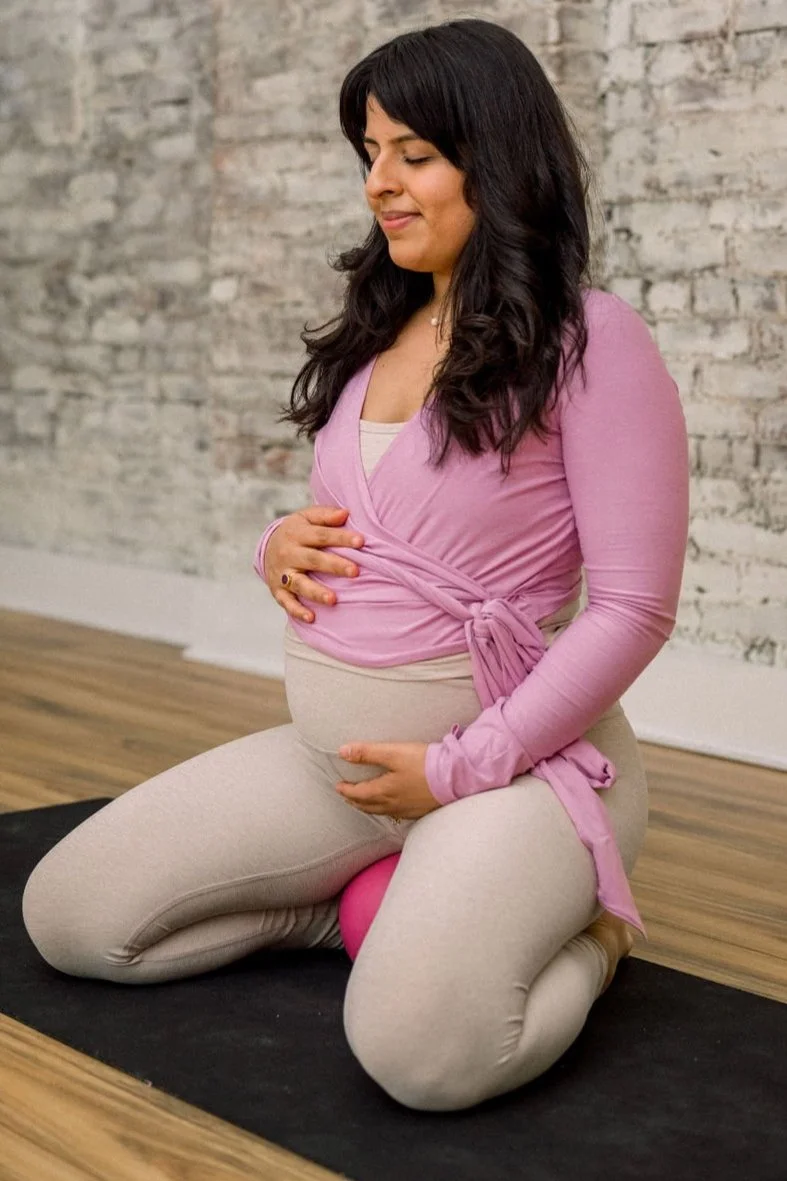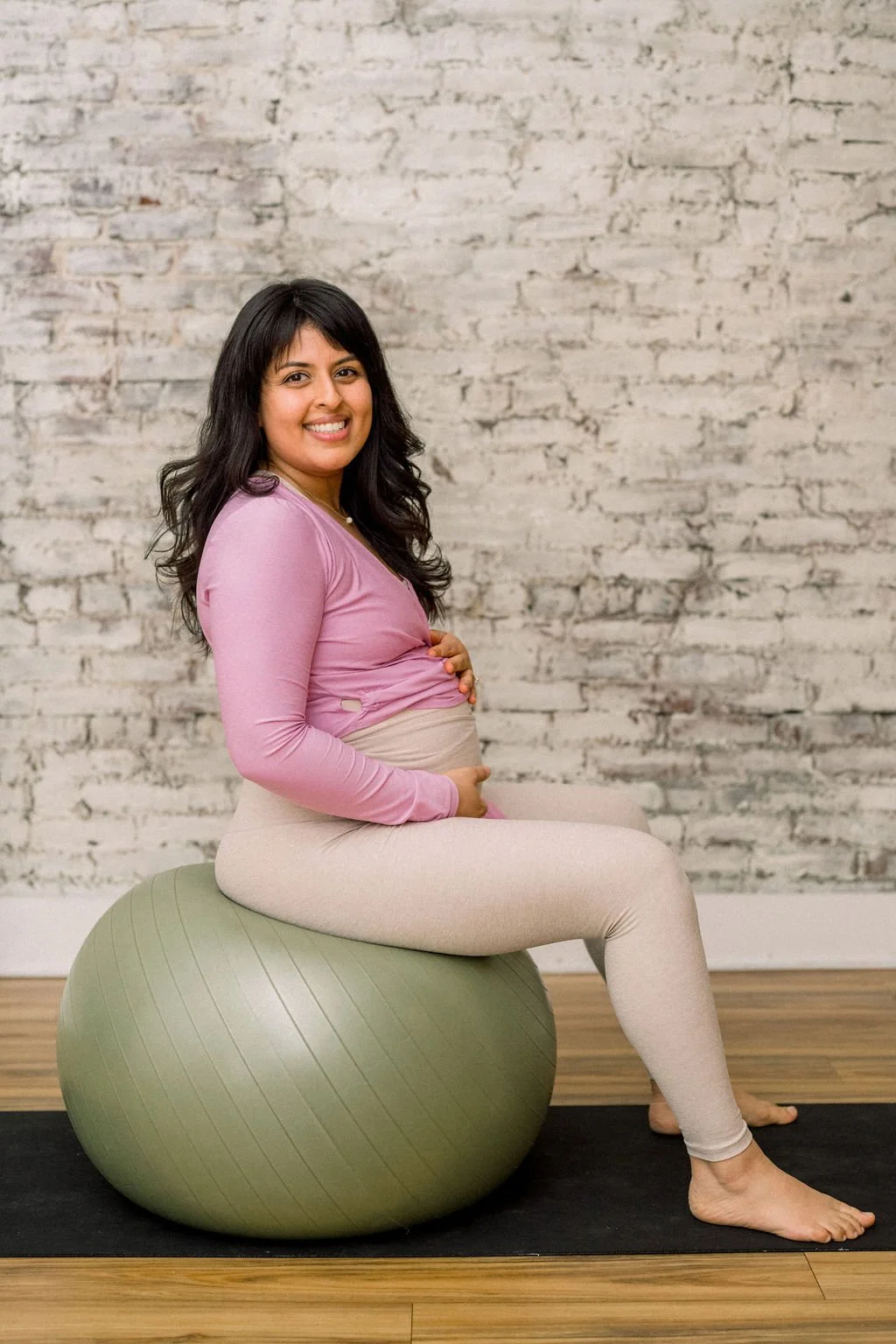5 ways to minimize perineal tearing during birth
Dr. Ayesha Bhonsle PT, DPT, PRPC, OCS, RYT, IADN CERT
Let’s talk pelvic health—poop, pee, sex, and everything in between. I’m here to empower your pelvis and help you feel strong, informed, and unstoppable.
What Perineal Tearing Really Is—and How to Set Yourself Up for a Better Birth Experience
With my first daughter, I didn’t prepare at all and I wound up having a 2nd degree tear with a 5 lb baby. That tear hurt me for a whole year postpartum, because I didn’t take the steps to heal it and honestly I had postpartum anxiety surrounding my pelvic floor and how different my body was.
I treated myself, performing perineal massage, working on adductor and deep core strength while also creating space and mobility for my pelvic floor, eventually reducing pain with intercourse and sitting.
I wound up helping so many other women with the same problems - teaching them how to minimize tearing in delivery and also how to heal postpartum.
Let’s break down the process: what exactly is a perineal tear, how can it affect your recovery, and what can you do during pregnancy to reduce your risk?
What Is a Perineal Tear?
The perineum is the tissue between the vaginal opening and the anus. During vaginal birth, this area stretches to allow your baby to pass through. Sometimes, especially with a fast delivery or limited tissue flexibility, the perineum may tear.
Tears range from first-degree (superficial) to fourth-degree (extending into the rectal tissue).
While not all tears are avoidable, the way you prepare your body in pregnancy and move during labor can significantly influence your risk.
Why Do Perineal Tears Matter?
Tearing can contribute to:
Pain with sitting, walking, or toileting postpartum
Scar tissue discomfort or tightness
Urinary or fecal incontinence
Pelvic floor dysfunction
Delayed healing and return to intimacy or exercise
This doesn’t mean you should be afraid—but it does mean there’s power in preparation.
How to Minimize Tearing:
1. Practice Perineal Massage
Starting around 35 weeks, gentle perineal massage can help:
Increase tissue flexibility
Decrease resistance during crowning
Improve your mind-body connection to the area
This can be done by you independently or with a wand, or with a partner, using a natural lubricant like vitamin E or coconut oil or even evening primrose oil to help with cervical softening.
2. Strengthen and Soften Your Pelvic Floor
It's not just about kegels. A strong pelvic floor is helpful—but it must also be able to relax and soften during birth.
It’s important to learn how to:
Connect breath to pelvic floor movement
Coordinate pushing without breath holding
Recognize tension and release it rather than create more
3. Optimize Pushing Positions
The position you’re in during pushing affects how your perineum stretches. Upright, forward-leaning, or side-lying positions often:
Reduce pressure on the perineum
Work with gravity
Allow better fetal rotation
Talk to your provider about birth positions that minimize directed pushing and maximize your ability to move intuitively.
4. Use Warm Compresses During Crowning
There’s strong evidence that a warm compress on the perineum during the second stage of labor:
Increases circulation
Soothes tension
Reduces the likelihood and severity of tearing
This is a simple, effective strategy—ask your provider or birth team if they can support this.
5. Train Your Breath and Body Now
Pregnancy is the time to learn:
How to breathe through intensity, not brace and hold your breath
How to engage your deep core to support baby’s descent
How to push effectively (hint: it’s not holding your breath and clenching!)
Learning the difference between open glottis and closed glottis breathing can help you with pushing properly. At some point, you will hold your breath a little and that’s OK. It’s a problem when you are trying to push baby out but can’t actually perform a perineal descent (and wind up pushing for hours until exhaustion).
~A note ~
You don’t need to obsess over avoiding a tear—but you can feel empowered knowing you’ve done your part to minimize the risk.
Through thoughtful movement, breath work, and education, you can set the stage for a more intuitive and supported birth, with an easier recovery postpartum. .
Want to feel empowered and prepared as you head into
your baby’s birth?
I want that for you, too! That’s why I created the Prepared Pregnancy program in my app, reBlume. Made for you by me, a Doctor of Physical Therapy, Pelvic Rehabilitation Practitioner, Orthopedic Clinical Specialist, and a yoga teacher. Through 20 weeks of programming, I”ll teach you how to relax your pelvic floor, push efficiently, open your pelvis for birth preparation, and so much more. It’s never too late to start.
Prepared Pregnancy will help you:
Get your whole body ready for birth with labor prep workouts
Learn how to advocate for yourself in the hospital, birthing center or home
Prepare your pelvis and pelvic floor to stretch over 3x it’s normal capacity with perineal massage programming
Provide your support person with hands-on techniques
Minimize tearing and risk for C-Section
Learn about labor positions, your pelvic floor and how to optimize recovery.
Recover from a vaginal or a C-section delivery with 12 weeks of postpartum rehab
With bite-sized educational modules, labor-prep workouts, calming visualizations, and printable cheat sheets for birth, I’ve designed this course to help you feel prepared, grounded, and confident—because that’s what truly matters.



